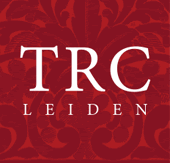Marken is a fishing village in the Dutch province of Noord-Holland and was formerly an island in the Zuiderzee. With the building of the Afsluitdijk in 1932 the Zuiderzee was cut off from the North Sea. The water level changed and Marken became an island in what is now known as the IJsselmeer. It was later connected to the mainland with a dyke.
Marken is well-known in The Netherlands for its ‘traditional’ regional form of attire, which is still worn on a daily basis by some women, girls and very young boys (until the age of about three, boys wear similar clothing to girls, then they start to wear men’s garments).
 Postcard with two Marken girls wearing decorative chest panels, early 20th century (TRC 2018.0454). Click on the image for more information.
Postcard with two Marken girls wearing decorative chest panels, early 20th century (TRC 2018.0454). Click on the image for more information.
The outfits for women, girls and young boys include a chest piece locally called a bauw (borstlap). Those for women and girls are normally decorated with flowers and ornate motifs. Some of the cloths used for a bauw date back as far as the 18th century. In addition, many people use later copies of these early cloths, Asian-style textiles or actual Asian cloths (especially batiks from Indonesia).
The bauw for a young boy is normally in a red/white checked material with a white band down the middle, so it is easy to tell the difference between a bauw for a boy or a girl.
Young boys and girls also wear an apron (boezel, schort). The aprons for a girl are made of a plain, dark material, while those for a boy are of patterned cloth, and are often made of batik material from Indonesia or in the Indonesian style.


